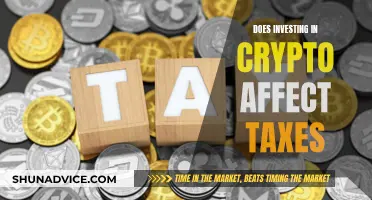
Bitcoin has gone from a digital currency with little value to a widely accepted means of payment and investment. There are several ways to invest in Bitcoin, each with its own advantages and disadvantages. Here are some of the most common methods:
- Cryptocurrency Exchanges: These online platforms allow users to buy, sell, and trade various cryptocurrencies, including Bitcoin. Examples include Coinbase, Gemini, and Kraken.
- Bitcoin Investment Funds: These funds are managed by professionals who invest in Bitcoin on behalf of their clients, aiming to generate returns that outperform the market. Examples include Exchange Traded Funds (ETFs) and Bitcoin Trusts.
- Self-Custody: This option gives you complete control over your Bitcoin. It involves using a Bitcoin wallet, such as a desktop, mobile, or hardware wallet, to send, receive, and store your Bitcoin without third-party involvement.
- Traditional Stockbrokers: Some traditional brokers, like Robinhood, offer Bitcoin trading alongside stocks.
- Peer-to-Peer Money Transfer Apps: Cash transfer services like PayPal, Venmo, or Cash App allow users to purchase, store, send, and sell Bitcoin directly through their apps.
- Bitcoin ATMs: These machines allow individuals to insert cash and use it to purchase Bitcoin, which is then transferred to online wallets.
| Characteristics | Values |
|---|---|
| Investment Options | Cryptocurrency Exchanges, Investment Funds, Self-Custody |
| Investment Funds | Exchange Traded Funds (ETFs), Bitcoin Trusts and Mutual Funds |
| Cryptocurrency Exchanges | Coinbase, Kraken, Gemini, Binance, eToro, Crypto.com, Robinhood, etc. |
| Investment Strategies | Buy and Hold, Dollar Cost Averaging, Trading, Bitcoin Mining |
| Risks | Volatility, Mismanagement, Hacking, External Factors |
What You'll Learn

Bitcoin wallets
Once you've bought your Bitcoin, you'll need to store it in a digital wallet. There are two types of Bitcoin wallets: hot wallets and cold wallets.
Hot wallets are connected to the internet and are often free to use. They are typically easier to transact with but are more vulnerable to hacking. Examples of hot wallets include mobile, desktop, and browser extension wallets.
Cold wallets, on the other hand, are not connected to the internet and are considered more secure. However, they are harder to transact with and, if you lose the device, recovery can be difficult. Examples of cold wallets include hardware wallets and paper wallets.
When choosing a hot wallet, it is important to consider the security features offered, such as two-factor authentication, as well as the number of digital assets supported and the ease of moving crypto offline into cold storage.
For cold wallets, it is important to consider the security features and whether it integrates with any hot wallet software you may be using.
Hot Wallets:
- Crypto.com DeFi Wallet: Supports over 1,000 digital assets and integrates with a desktop app and Ledger hardware wallets.
- Guarda: Free wallet that supports over 400,000 digital assets and integrates with mobile, desktop, and browser extension. Also has staking programs available.
- Exodus: Offers a mobile app, desktop app, and browser extension. Allows users to buy, trade, or stake cryptocurrency directly from their wallets and has an integration with the Trezor cold wallet.
- Coinbase Wallet: Integrates easily with the Coinbase exchange and supports thousands of digital assets. Also has connections to decentralized applications.
- Trust Wallet: The official wallet of Binance, supporting over 10 million digital assets and over 100 blockchains. Integrates with a mobile app and browser extension.
- MetaMask: Stores any digital asset built on Ethereum and integrates with many "Web3" applications. Offers mobile and browser-based wallets.
Cold Wallets:
- Ledger: Well-known name in crypto wallets, offering a mobile app, desktop app, and browser extension. Integrates with many popular software wallets and offers educational content for users.
- Trezor: Offers high-end hardware with a touch screen. Integrates with other crypto firms and provides built-in services such as staking and crypto purchases. Has a desktop and mobile app offering.
- Paper Wallet: Wallets generated at certain websites that produce both public and private keys printed on paper. These can then be laminated and stored in a safe deposit box or home safe.
The Lightning Network: Bitcoin's Future and How to Invest
You may want to see also

Cryptocurrency exchanges
There are two main types of cryptocurrency exchanges: centralized and decentralized. Centralized exchanges are managed by a single authority, like a brokerage company, and make it easy for users to convert fiat currency into crypto. Decentralized exchanges, on the other hand, distribute responsibility for facilitating and verifying crypto trades across their network. While decentralized exchanges may offer greater transparency and accountability, they are typically less user-friendly and require users to already own crypto or use a centralized exchange to obtain crypto to trade.
When choosing a cryptocurrency exchange, it is important to consider factors such as security, fees, the range of cryptocurrencies offered, and whether the exchange is centralized or decentralized. It is also crucial to understand how your cryptocurrency will be stored and whether you can take custody of it by transferring it to your own digital wallet. Additionally, some exchanges may offer features such as crypto staking, margin trading, and educational resources.
Some popular cryptocurrency exchanges include:
- Binance
- Coinbase
- Gemini
- Kraken
- Crypto.com
- EToro
- KuCoin
- Robinhood
Shiba Inu Coin: A Guide to Investing in India
You may want to see also

Bitcoin ETFs
The first Bitcoin spot ETFs were approved by the Securities and Exchange Commission (SEC) in January 2024, and they began trading on January 11, 2024. There are two types of Bitcoin ETFs: spot Bitcoin ETFs and Bitcoin strategy ETFs. Spot Bitcoin ETFs directly hold Bitcoins, while Bitcoin strategy ETFs attempt to track the price of Bitcoin indirectly by investing in Bitcoin futures or Bitcoin mining stocks.
Some popular Bitcoin ETFs include:
- ProShares Bitcoin Strategy ETF (BITO)
- Valkyrie Bitcoin Strategy ETF (BTF)
- VanEck Bitcoin Strategy ETF (XBTF)
- IShares Bitcoin Trust (IBIT)
- Fidelity Wise Origin Bitcoin Fund (FBTC)
- WisdomTree Bitcoin Fund (BTCW)
- Invesco Galaxy Bitcoin ETF (BTCO)
There are several benefits to investing in Bitcoin ETFs:
- Convenience: Spot Bitcoin ETFs are more accessible to a broader range of investors, lowering the barriers to entry into the crypto market.
- Liquidity: They make buying and selling Bitcoins easier through familiar brokerage accounts.
- Regulatory Oversight: They are subject to rules that ensure transparency and protect investors.
- Tax Implications: In certain jurisdictions, spot Bitcoin ETFs could have tax benefits compared to holding cryptocurrencies directly.
However, there are also some risks associated with investing in spot Bitcoin ETFs:
- Crypto Volatility: Bitcoin prices can be highly volatile, which could lead to significant financial losses.
- Regulatory Uncertainty: There is a lack of a clear regulatory framework to protect investors, and future regulations could affect the performance of Bitcoin ETFs.
- Security Risks: Spot Bitcoin ETFs hold a large number of Bitcoins, making them attractive targets for cybercriminals.
- Management Fees: These ETFs charge management fees or expense ratios, which can diminish returns over time.
- Tracking Error: Differences between the ETF share cost and the value of Bitcoin can occur due to liquidity in the market, delayed rebalancing of the fund's holdings, and management fees.
Martin Lewis: Bitcoin Investor or Not?
You may want to see also

Bitcoin ATMs
- Get a Bitcoin wallet: When you purchase Bitcoin, you need a place to store it. A Bitcoin wallet is a digital tool that allows users to store, send, and receive Bitcoin securely.
- Find a Bitcoin ATM near you: According to the Bitcoin.com Map, there are tens of thousands of Bitcoin ATMs globally, with most of them located in the United States.
- Buy Bitcoin from the ATM: Enter the amount you want to purchase. Depending on local regulations and the amount you are purchasing, you may need to verify your identity. Provide your Bitcoin wallet address by using the ATM's camera to scan the QR code of your Bitcoin wallet address displayed in your Bitcoin wallet app. You can then pay using cash, credit card, or a payment app.
Similarly, you can sell Bitcoin through a Bitcoin ATM by following these steps:
- Enter the amount you want to sell: Depending on local regulations and the amount you are selling, you may need to verify your identity.
- Send Bitcoin to the provided address: The ATM will generate a Bitcoin address for your transaction. You can scan the QR code of the provided address and send the Bitcoin to that address using your Bitcoin wallet app.
- Take your cash: Once the ATM receives the Bitcoin, it will dispense your cash. This usually takes a few minutes, and you can monitor the status of the transaction using your Bitcoin wallet app.
It is important to note that Bitcoin ATM providers are responsible for the hardware and software that powers the machines, ensuring they are secure, user-friendly, and compliant with local regulations. Some providers only focus on machine production, while others offer a comprehensive service package that includes deployment, maintenance, and regulatory compliance.
Additionally, there are fees associated with using Bitcoin ATMs. The worldwide average purchase fee is 8.4% of the purchase amount, and 5.4% for sales. These fees are generally higher compared to other options for buying and selling Bitcoin.
The Ultimate Guide to Investing in Dogecoin via Cash App
You may want to see also

Bitcoin investment funds
Types of Bitcoin Investment Funds
Exchange-Traded Funds (ETFs)
Bitcoin ETFs are funds traded on exchanges like traditional stocks. They track the price of Bitcoin, providing investors with exposure to the cryptocurrency market. ETFs can be easily bought and sold, and their prices fluctuate throughout the trading day.
Some examples of Bitcoin ETFs include:
- ProShares Bitcoin Strategy ETF (BITO)
- Valkyrie Bitcoin Strategy ETF (BTF)
- VanEck Bitcoin Strategy ETF (XBTF)
Bitcoin Trusts and Mutual Funds
These funds are managed by investment professionals who decide which assets to invest in and when to buy or sell them. Trusts, such as the Grayscale Bitcoin Trust and Osprey Bitcoin Trust, hold Bitcoin as their underlying asset. This allows investors to gain exposure to Bitcoin's potential returns without owning the cryptocurrency itself.
Benefits of Bitcoin Funds
- Diversification: Investing in a Bitcoin fund can diversify an investor's portfolio as the fund may invest in other assets in addition to Bitcoin.
- Professional Management: Bitcoin funds are managed by financial experts with cryptocurrency market expertise.
- Accessibility: Investing in a Bitcoin fund is generally easier and more convenient than purchasing and storing Bitcoin yourself.
Risks of Bitcoin Funds
- Volatility: Bitcoin is a highly volatile asset, and investing in a Bitcoin fund can expose investors to significant price fluctuations.
- Fees: Bitcoin funds charge management and administration fees, which can eat into returns.
Overall, Bitcoin investment funds offer a hands-off strategy and the assurance that your investments are managed by professionals. However, they may not directly correlate with Bitcoin's price movements due to investing via "contracts" or "futures". It is essential to research and understand the unique nature of these funds before investing.
Gold Coins: Liquid or Fixed Investment?
You may want to see also
Frequently asked questions
There are several ways to invest in Bitcoin, including cryptocurrency exchanges, traditional stockbrokers, money transfer apps, Bitcoin ATMs, and Bitcoin ETFs.
Bitcoin is a decentralized digital currency that operates without a central bank or single administrator, making it a peer-to-peer electronic currency system. It has gained wider acceptance as a means of payment and investment, and several major companies have invested in it.
Bitcoin is a highly volatile asset, and its value can fluctuate suddenly. Additionally, there is a risk of dealing with mismanagement by the custodian when holding Bitcoin on an exchange or with an investment fund.
You will need to open an account at a cryptocurrency exchange, deposit fiat currency, and then use the exchange's trading function to purchase your desired amount of Bitcoin.
Instead of investing directly in cryptocurrencies, you can invest in bigger and more established companies that benefit from the increased popularity of blockchain and crypto assets, such as Coinbase, Block, PayPal, and Robinhood Markets.







